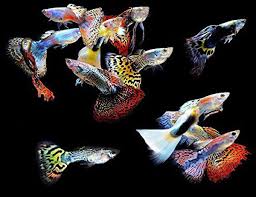The Unexpected Revival of a Timeless Accessory
The subtle elegance of a soft revolution
As fashion trends often cycle through time, what was once old becomes new again. In 2025, the return of the white bow as a hair accessory has taken the beauty and fashion worlds by surprise. Once a symbol of innocence and youthful femininity, the white bow now emerges in bold new forms that redefine elegance for a modern generation. This trend, rooted in tradition, now finds itself at the center of conversations around style, identity, and nostalgia. What makes this accessory so enduring is not just its simplicity, but its ability to shift meaning and adapt to new cultural moods.
The white bow’s resurgence did not happen overnight. It crept back into the public eye through a mix of runway influence, celebrity choices, and social media virality. Where once it belonged to school uniforms or vintage brides, it now appears on fashion influencers, pop stars, and everyday people seeking to add a touch of charm to their look. The revival feels both nostalgic and fresh, making it a powerful statement in a year when fashion seeks balance between past and future.
Tracing the roots of a classic hair accessory
The story of the white bow begins long before 2025. Throughout history, hair bows have held strong visual symbolism. In 18th century France, they decorated elaborate powdered wigs, signaling wealth and taste. During the Victorian era, they became more modest and were associated with femininity and good manners. In the 20th century, film icons like Audrey Hepburn and Grace Kelly wore white bows in ways that highlighted their elegance and poise. The white bow was never just an accessory—it was a signal, an emblem of class, and sometimes even defiance.
By the 1980s and early 90s, the bow had softened its image. It became youthful, playful, and girlish, often seen on children or in pop culture references to innocence. But as styles matured into minimalism and edgier streetwear, bows lost their place in the mainstream. They were seen as too delicate, too sweet, or too outdated. That made their sudden return in 2025 all the more unexpected—and compelling.
How high fashion reimagined the white bow
The return of the white bow can be traced to some of the boldest moves in haute couture. Designers at Fashion Week in Paris and Milan began pairing exaggerated white bows with structured, modern outfits. No longer confined to delicate or soft looks, these oversized bows made statements. They appeared on slick ponytails at Chanel, on high buns at Dior, and pinned low on twisted braids at Balmain. In every case, the white bow provided a contrast to sharp lines and contemporary silhouettes.
This contrast—between soft and strong, vintage and modern—quickly became the white bow’s signature aesthetic. The bow no longer represented fragility. Instead, it became a kind of armor. When tied tightly over jet-black hair or used to break up an all-monochrome outfit, the white bow disrupted expectations. Its ability to hold tension between innocence and power made it an irresistible choice for designers looking to say something bold through subtle means.
Celebrity influence and viral moments
Fashion trends gain momentum not only on runways but through the people who wear them beyond the catwalk. In 2025, the white bow owes much of its visibility to a few key moments in pop culture. When a leading pop icon appeared at a global music award ceremony with a long white bow trailing down her back, the internet lit up. Images of the look circulated for weeks, and tutorials for recreating it began trending within hours.
Other celebrities followed. Young actresses on red carpets, social media influencers filming GRWM (Get Ready With Me) videos, and even athletes at press events began to adopt the look. The white bow became a signifier of personal style, suggesting sophistication without trying too hard. It told a story—sometimes romantic, sometimes bold—and each wearer added a new layer of meaning.
Social media’s role in spreading the trend
In 2025, no trend gains traction without a digital footprint. The white bow exploded across platforms like Instagram, TikTok, and Pinterest. Hashtags like #WhiteBowTrend and #BowRevival collected millions of views. Creators shared tutorials on tying the perfect bow, styling different hair types, and even DIY methods to craft the accessory at home. This accessibility only fueled the trend further.
The white bow appealed to both minimalists and maximalists. Some wore it as a simple ribbon tied at the nape of the neck, while others went for long satin bows adorned with crystals or embroidery. TikTok users embraced it as part of aesthetic identities—coquette, cottagecore, balletcore—while others blended it into more urban or edgy looks. It became a canvas on which individuals could project their personal style.
Why 2025 was the perfect time for the comeback
Trends do not exist in a vacuum. The timing of the white bow’s return speaks volumes about the cultural mindset of 2025. After several years of global uncertainty, fashion has leaned into comfort and familiarity. People seek meaning and emotional connection in what they wear, and accessories like the white bow offer both. They are tactile, sentimental, and remind people of simpler times.
Moreover, there’s a broader revival of femininity in fashion—not in a restrictive or traditional sense, but in an expressive and personal one. The white bow is part of a larger movement that embraces softness without sacrificing strength. As conversations about gender, expression, and self-presentation become more nuanced, accessories like the white bow allow people to explore these themes with creativity and subtlety.
The new language of the bow
One of the most fascinating aspects of the white bow’s resurgence is its fluid symbolism. It no longer speaks only to one demographic or style category. A teenager might wear it as part of a sweet pastel outfit. A fashion editor might pair it with a power suit. A nonbinary influencer might use it to soften a sharp hairstyle. The meaning of the white bow has expanded far beyond its historical constraints.
It now operates as a kind of visual language. Its placement, size, material, and context all shape how it is perceived. Worn low, it might feel demure. Placed high, it might suggest defiance. In silk, it feels luxurious. In cotton, it feels natural. This flexibility makes it one of the most dynamic accessories of the year, and one that continues to inspire reinterpretation.
A symbol rewritten for the present
The white bow in 2025 is more than just a fashion trend—it is a reimagined classic. Its power lies in its subtlety, its ability to bridge history and modernity, softness and strength, individuality and tradition. What began as a quiet return has grown into a cultural moment, reminding the fashion world that even the simplest details can carry profound impact.
As more people find their own ways to wear and reinvent the white bow, it becomes clear that this is not just a passing fad. It reflects something deeper—a desire for connection, expression, and beauty in everyday life. In a world increasingly dominated by rapid change, the white bow offers a pause, a moment of grace, and a statement of personal style that whispers rather than shouts.
From Subculture to Mainstream — How Every Style Found a Place for the White Bow
A cultural chameleon with universal appeal
As 2025 unfolds, it becomes increasingly evident that the white bow is not limited to any one group or aesthetic. While its origins lie in elegance and tradition, the accessory has since found new life in a variety of fashion scenes. Across subcultures and age groups, people have discovered how the white bow complements their self-expression. It adapts and reinvents itself with every new stylistic lens, making it one of the most versatile trends in the current fashion landscape.
The most striking thing about the white bow’s popularity is not just how widely it is worn, but how differently it is interpreted. From teenagers embracing soft pastel tones to adults merging minimalism with romantic details, and from avant-garde designers to casual streetwear enthusiasts, the white bow has proven its ability to transcend boundaries. Its appeal is no longer about a single look—it’s about possibility.
The soft revolution of the coquette aesthetic
One of the first subcultures to breathe new life into the white bow was the coquette fashion movement. This aesthetic, deeply rooted in femininity, romanticism, and vintage charm, embraced the bow not as a gimmick, but as a central emblem of identity. Influenced by literary heroines, old cinema, and soft textures, the coquette look became a haven for those who celebrated delicate expression.
In this world, the white bow took on a whispering elegance. It was often placed at the crown of the head, tied into flowing curls, or pinned behind the ear like a secret message. These styling choices suggested emotional depth and a quiet kind of strength. The coquette aesthetic rejected loudness, choosing instead to build power through softness. The white bow became its signature, both ornamental and symbolic.
This interpretation of the bow was not about submission or perfection—it was about intentional softness in a harsh world. For many who aligned with the coquette style, the bow became a daily ritual, an anchor that reminded them of their values in a world of distractions. It was beauty with purpose, and it shaped the foundation for the accessory’s wider return.
Streetwear’s surprising romance with tradition
On the surface, streetwear might seem like the last place where a delicate accessory like a white bow would thrive. Known for oversized silhouettes, bold graphics, and utilitarian influences, streetwear built its identity around a kind of cool resistance. But fashion in 2025 is about contradiction and hybridity, and streetwear has evolved to embrace elements that would once have been dismissed as “too pretty.”
In this context, the white bow has become a tool for contrast. It shows up tied around high ponytails under bucket hats, woven into braids that hang down over hoodies, or clipped onto the back of beanies. This merging of softness with edge has opened up new stylistic territory. It reflects a cultural shift—one where vulnerability and toughness are no longer opposites, but can coexist within the same visual language.
By welcoming the white bow, streetwear has deepened its emotional range. The bow adds layers of personal meaning, nostalgia, and irony. It hints at a past life or an alternate identity, softening the look without compromising its strength. It is the kind of unexpected detail that elevates a style from repetition to reinvention.
Minimalism meets expression in modern adult fashion
Adults in their late 20s, 30s, and beyond have also found ways to incorporate the white bow into their wardrobes, often pairing it with minimalist aesthetics. While youth subcultures often embrace maximalism, older generations tend to seek quieter forms of self-expression. For these fashion-conscious adults, the bow offers an understated way to add warmth and story to an otherwise sleek look.
In professional spaces, white bows are seen tied low at the nape of the neck, paired with tailored blazers or knit tops. In more relaxed settings, they decorate half-up hairstyles or adorn clean buns for a touch of softness. The white bow serves as a reminder that elegance doesn’t have to fade with age—it can evolve.
Rather than signaling innocence, the bow here becomes a mark of intentionality. It shows that the wearer has chosen to care about the small details, to slow down and consider how they present themselves to the world. It’s no longer about trends—it’s about identity and refinement. This version of the white bow is quiet but confident, romantic but modern.
The bow through a gender-inclusive lens
One of the most progressive aspects of the white bow trend in 2025 is its expansion into gender-inclusive fashion. The accessory has shaken off its historical association with binary femininity and is now embraced by individuals across the gender spectrum. In this new context, the white bow becomes a symbol of fluidity, softness, and resistance to rigid expectations.
Nonbinary influencers, trans artists, and fashion-forward men have reclaimed the bow not as a concession to traditional femininity, but as a subversion of it. Worn against buzz cuts, tied onto suspenders, or even looped into earring hoops, the bow transcends hair altogether. It becomes a modular symbol—one that speaks to transformation, play, and rebellion.
This interpretation challenges the idea that elegance must be gendered. It allows people to use the bow to explore aspects of their identity that society might otherwise discourage. It’s about creating space, visually and emotionally, for complexity. The white bow thus becomes a flag not of belonging to a particular group, but of refusing to be boxed in.
Generational styling and cross-age influence
The white bow has also built a rare bridge between generations. Young people often discover it through influencers or pop icons, while older individuals are drawn to its timeless charm. Interestingly, many parents and children are now bonding over the accessory, wearing it together in different forms that reflect their personal styles.
This generational crossover has helped solidify the bow as more than a fleeting trend. For older individuals, it evokes memory and sentiment. For younger people, it represents freedom and creativity. The fact that it can hold both meanings at once is part of its magic. It allows for shared expression across age groups without losing its relevance.
In this way, the white bow has become a connector. It ties generations together—literally and symbolically—through a shared appreciation of beauty, form, and self-expression. It is a reminder that fashion, when done thoughtfully, is not only about appearance but about emotion and story.
Global interpretations and cultural nuances
Around the world, the white bow is also being reinterpreted through different cultural lenses. In East Asia, where hair accessories have long been valued for their symbolism and delicacy, the bow has entered popular youth fashion with particular resonance. Styled with school uniforms, flowing hanfu garments, or sleek contemporary fashion, the white bow blends seamlessly into both heritage and trend.
In Western Europe, where art and style often intersect, the bow is seen as a canvas for artistic expression. Some stylists paint them, add stitching, or layer them with other elements. Meanwhile, in Latin America, where vibrancy and color often take center stage, the white bow offers a striking contrast—its purity highlighting the richness around it.
These global variations demonstrate the white bow’s ability to absorb new meanings without losing its essence. It becomes a mirror, reflecting the values, aesthetics, and emotional tones of the cultures that adopt it. In this way, it becomes more than an accessory—it becomes a visual dialogue.
A trend shaped by its wearers
In 2025, the white bow is no longer confined by its origins or limited by tradition. It has traveled through subcultures, age groups, gender identities, and international fashion landscapes to become a symbol of self-expression and versatility. Its power lies not in being one thing, but in becoming many things to many people.
Each person who wears a white bow adds a new dimension to its story. Whether it’s tied delicately into soft curls, paired with a streetwear look, or clipped onto a backpack as a silent signature, the bow reflects the personality and values of its wearer. It adapts, it transforms, and it endures.
As the year continues, the white bow shows no signs of fading. Instead, it thrives through reinvention. It asks a simple but powerful question: What if something soft could be strong? And the answer, found in countless expressions across the globe, is this—beauty, when made personal, becomes timeless.
From Runway to Checkout — How the Fashion Industry is Profiting from the White Bow Boom
Designers rediscover a forgotten treasure
When the white bow began its return to the fashion scene, it did not immediately spark industry-wide attention. For a time, it was dismissed as a passing aesthetic tied to niche online communities or nostalgic fashion bloggers. But as more stylists, celebrities, and influencers started to wear the accessory, the larger fashion world began to take notice. By early 2025, the white bow had become not just a popular item, but a profitable opportunity.
Designers who typically resist fleeting trends found themselves inspired by the bow’s simplicity and flexibility. Luxury labels began incorporating the white bow into their seasonal presentations, styling it in unexpected ways. Some tied oversized versions onto models’ backs as part of gowns. Others shrunk the bow into delicate wrist wraps or used it to fasten the necklines of blouses. The white bow became a kind of fashion punctuation mark—simple in shape, but rich in interpretation.
It was not long before these runway moments filtered into high fashion campaigns and promotional materials. Suddenly, the bow was not only featured in hairstyles but also turned into jewelry, printed motifs, and decorative accents on designer handbags. For luxury brands, the white bow was an opportunity to return to a sense of softness and formality without becoming outdated. It allowed them to connect with current consumers craving comfort while maintaining the aura of refinement.
Retail giants move quickly to meet demand
As luxury designers began showcasing white bows in their collections, fast fashion brands were already racing to meet consumer demand. Major retailers like Zara, H&M, and Uniqlo recognized that the bow trend was gaining momentum and wasted no time creating affordable versions. Unlike some luxury trends that struggle to find a mass-market equivalent, the white bow was inherently adaptable. Its cost of production was low, and its appeal was high.
Retailers offered the bow in endless variations—velvet, satin, silk, cotton—and in all sizes, from tiny clips to full-length ribbons. Some brands went further, incorporating it into complete outfits. Blouses with pre-attached bows, headbands adorned with bows, and even shoes with bow embellishments flooded store shelves. In doing so, these companies transformed the white bow from an accessory into a movement.
This strategy paid off. By the end of the first quarter of 2025, sales of hair accessories had surged, with white bows leading the way. Stores reported that these items were among the first to sell out each week. Customers across different demographics were drawn to the versatility and charm of the bow, making it one of the most accessible and profitable trends of the year.
Boutique brands and handmade revival
Alongside corporate giants, small business owners and independent makers found new creative ground in the white bow. Etsy storefronts, Instagram shops, and local craft markets began to feature hand-sewn bows made from sustainable materials, vintage fabrics, or custom designs. These versions of the white bow held a different kind of appeal: they promised individuality in a world of mass-produced fashion.
Boutique brands often added personal touches that made their products stand out. Some offered monogramming services, allowing customers to inscribe initials on their bows. Others offered bows in antique lace passed down through generations or ethically sourced silk dyed with natural pigments. These versions of the trend tapped into consumer desires for meaning, storytelling, and intentionality.
Rather than competing with luxury or fast fashion, handmade white bows carved their own path. They became tokens of self-expression and thoughtful gifting. For younger consumers especially, purchasing from small shops became a way to engage with the trend while supporting artisans and staying true to their values. In this way, the white bow encouraged not only creativity but also economic diversity within fashion’s evolving market.
Digital marketing fuels the obsession
Social media played an undeniable role in the white bow’s meteoric rise. As with many modern fashion trends, platforms like Instagram, Pinterest, and TikTok provided the perfect stage for the accessory to shine. Influencers across genres—beauty, fashion, lifestyle, even book and cottagecore creators—posted aesthetic reels featuring the white bow in various settings.
The visual nature of the bow made it a dream for content creation. It popped against a range of backdrops, from minimalist studio shoots to cozy garden scenes. The bow’s inherent symmetry and softness made it highly photogenic. As posts featuring the bow gained millions of views, brands took notice. They began sending PR packages containing different bow styles to influencers in hopes of catching viral attention.
What followed was a cascade of user-generated content. Everyday consumers posted their own takes on the white bow, using hashtags that helped the trend gain traction. Algorithms picked up on this behavior and began pushing bow-related content onto Explore pages and recommendation feeds. This accelerated the trend beyond fashion circles into more mainstream digital spaces.
For marketers, the white bow became a case study in organic virality. Its success was not forced—it grew naturally through repetition, visibility, and aesthetic satisfaction. In a world saturated with advertising, the bow felt fresh because it looked personal. It allowed individuals to join the trend without needing to overhaul their entire wardrobe. This low barrier to entry made marketing efforts highly effective.
The rise of seasonal and limited edition designs
As with any trend, the white bow needed variation to sustain momentum. To meet this need, brands began releasing seasonal or limited edition bow collections. Spring collections featured bows in sheer materials or embroidered with florals, while winter lines leaned into velvet and pearl embellishments. Some designers even released bows tied to cultural events or holidays, blending fashion with celebration.
This strategy encouraged repeat purchases and fostered a sense of urgency. Consumers who bought one bow now felt compelled to collect others. Some brands launched subscription services or membership clubs where customers received a new bow each month, tapping into the popularity of curated fashion boxes. This allowed the trend to feel fresh even months after its reemergence.
Limited edition bows were also used to partner with artists, musicians, or influencers. Collaborations added an extra layer of exclusivity and buzz. A bow created in partnership with a popular YouTuber or an up-and-coming fashion illustrator could sell out within hours. These partnerships proved that the white bow was not just a fashion statement but a powerful tool for branding and collaboration.
Luxury and exclusivity within simplicity
Interestingly, the white bow has also become a vehicle for luxury pricing. High-end designers found ways to elevate a simple bow into a premium product. They used materials like Italian silk, French lace, and hand-beaded embroidery. Packaging played a role too, with bows arriving in custom boxes tied with wax-sealed envelopes or accompanied by handwritten notes.
This attention to presentation and detail allowed brands to charge hundreds of dollars for a single bow. In some cases, the bow became a collector’s item. Fashion houses framed them in glass or included them in special-edition runway archives. The bow’s transformation from an everyday item into a luxury good showed how perception, brand power, and craftsmanship could shift the value of even the simplest accessory.
Consumers willing to spend at this level weren’t just buying a hair accessory. They were investing in a feeling, a memory, or a piece of cultural history. These luxury bows acted as wearable art, blending nostalgia with sophistication.
A new blueprint for trend monetization
The white bow’s rise in 2025 offers more than just a look—it presents a lesson in how fashion trends can evolve from aesthetic ideas into global economic movements. What started as a quiet return to femininity and softness turned into a multi-market boom, involving high fashion, mass production, small business, and digital marketing.
Brands that succeeded did so by listening closely to what consumers wanted. Some offered minimalism, others romance, and still others exclusivity. All of them, however, recognized the bow’s emotional resonance. It wasn’t just an accessory—it was a statement, a memory, a mood.
In this sense, the white bow has redefined what it means to sell fashion in 2025. It is no longer enough to push products based on celebrity endorsements or runway visibility. Consumers want authenticity, versatility, and meaning. They want to see themselves in what they wear. The white bow answered that desire—and, in doing so, became a symbol not only of beauty but of how fashion can evolve to meet people where they are.
Looking Forward — The Future of the White Bow and What It Reveals About Culture, Fashion, and Identity
A trend that did more than just return
By now, the white bow is far more than just a fashionable accessory. It has become a symbol of how simplicity can carry profound cultural weight. What began as a nostalgic nod to femininity and softness has evolved into a powerful fashion statement, embraced by people across the world. Its presence in wardrobes, digital spaces, and even runway collections in 2025 confirms that this trend holds a lasting place in both style and sentiment.
As the year progresses, the question on everyone’s mind is what comes next. Will the white bow fade as quickly as it appeared, or has it sparked a deeper shift in how society views fashion, identity, and emotional expression? Part 4 explores the future of the white bow and how it may leave an imprint on style well beyond 2025.
Sustainability and slow fashion inspired by simplicity
The white bow’s minimalist charm has helped redirect attention to the growing importance of sustainability in fashion. Unlike fast-paced trends that rely on mass production and rapid turnover, the white bow calls for a slower, more thoughtful approach. It is not meant to be replaced each season but rather cherished, reused, and reimagined.
Fashion experts predict that this mindset will continue to gain ground. The bow, with its classic appearance and versatility, has reminded consumers that elegance does not require extravagance. As more people invest in quality over quantity, the industry may respond by producing fewer, better-made items that reflect long-term wearability rather than short-term novelty.
Designers already adapting this principle may expand their focus to include timeless accessories, layering pieces, and multipurpose garments. The white bow has shown that one item, when crafted well and worn intentionally, can elevate any look. It has helped reintroduce the idea that fashion can be both ethical and expressive, ushering in a new wave of slow fashion enthusiasts who value meaning over trend cycles.
The bow as a blank canvas for personal narrative
Part of the white bow’s ongoing appeal lies in its openness to interpretation. As it continues to spread through different cultures and communities, it becomes a vehicle for storytelling. It is no longer just about looking good—it is about feeling connected to a part of one’s own identity.
In future seasons, the bow may evolve as a medium for self-expression. Some designers have already begun incorporating messages, embroidery, and personal touches into bow designs. Consumers are experimenting with DIY projects, transforming simple white bows into artistic statements, complete with patches, beads, or handwritten phrases.
This personalization reflects a broader shift in consumer behavior. People no longer want to wear something because it is trending—they want it to represent something real. As social media platforms encourage authenticity over perfection, accessories like the white bow serve as quiet but powerful reflections of individuality. This evolving trend may see the rise of wearable keepsakes that blend emotional value with visual appeal.
Fashion education and generational influence
The white bow has also brought intergenerational conversations back into the spotlight. Many of those wearing the accessory in 2025 were introduced to it by older family members. A grandmother’s photograph, a vintage hair clip, or a box of keepsakes inspired younger generations to rediscover what once was considered dated.
This exchange between past and present may continue to influence fashion education and design theory. More fashion schools and design programs are beginning to teach the value of looking backward to move forward. Rather than seeing vintage trends as relics, students are learning how to reinterpret them through modern lenses.
The bow, in this context, becomes a bridge between tradition and innovation. It teaches new designers that timeless elements can be remade for new audiences. This could lead to a resurgence of other retro accessories, each reborn with thoughtful tweaks for contemporary use. In this way, the white bow may have opened a door for educational reform in the way fashion history is taught and applied.
Emotional fashion and wearable mood
Beyond aesthetics, the white bow trend has emphasized emotional fashion—a growing field that explores how clothing affects mood and identity. Studies have shown that what people wear can influence their emotions, confidence, and even behavior. The softness and delicacy of the white bow contribute to a sense of calm, elegance, and comfort.
As wearable technology continues to develop, it is possible that future iterations of fashion will incorporate psychological design. Designers may begin creating pieces that serve not only functional or visual purposes but emotional ones as well. In this context, the white bow is a forerunner—proof that style choices are deeply personal and often emotionally driven.
Expect to see future accessories that are designed to evoke specific feelings or mental states. Whether it is calmness, nostalgia, empowerment, or joy, clothing will increasingly aim to serve the soul as much as the body. The white bow’s rise may mark the beginning of this shift, where how one feels in an outfit becomes just as important as how it looks.
The digital closet and virtual fashion
As the line between physical and digital fashion continues to blur, the white bow has found new life in virtual spaces. Avatars in games, metaverse platforms, and social media filters now wear bows, with customization options that mimic real-world materials and designs. Digital creators are producing virtual bow accessories for augmented reality tools, allowing users to try on different looks without owning the physical item.
This digital adaptation points to a future where trends are not limited by physical inventory or material limitations. The white bow becomes accessible to anyone with an internet connection. It has inspired developers and 3D artists to craft new versions of the accessory, pushing boundaries of scale, color, and texture that would be difficult to achieve in the physical world.
In this future, fashion becomes increasingly fluid. Someone might wear a minimalist cotton bow in real life while rocking a glittering, oversized animated bow in a digital space. Both choices hold value and expression. The white bow has helped open minds to the possibility that fashion, like identity, is no longer bound to just one dimension.
Cultural evolution and gender expression
The rise of the white bow has also contributed to ongoing conversations about gender in fashion. While traditionally seen as a feminine accessory, the 2025 version of the trend has defied such boundaries. People of all gender identities have embraced the white bow for what it represents—grace, nostalgia, romance, and individuality.
This shift suggests a growing willingness to dismantle outdated style norms. Future trends may continue to move in this direction, with more emphasis on expression over expectation. The white bow serves as a reminder that fashion can be fluid, inclusive, and personal without needing to conform to strict definitions.
Designers are beginning to build collections with non-binary sensibilities, where accessories like bows, ruffles, lace, and silk are not gendered but universal. This democratization of fashion is creating a new landscape where creativity leads, and categorization fades into the background.
Conclusion: The legacy of the white bow
The white bow has done more than return—it has redefined what a trend can mean in a modern world. It has proven that timeless pieces still hold immense power, especially when reintroduced with care, creativity, and cultural awareness. From its revival in online aesthetics to its presence on global runways, the white bow has traveled across time, identity, and intent to land squarely at the center of 2025’s fashion story.
Its legacy will likely stretch far beyond this year. Whether in the form of new accessories, emotional design principles, or digital fashion evolution, the white bow has inspired a shift toward intentional, meaningful style. It has reminded the world that fashion is not just about looking good—it is about feeling known, remembered, and seen.
As the trend continues to unfold, its lasting influence may not be measured only by how many people wear bows but by how many begin to see fashion differently because of them. The white bow comeback is not just a celebration of past beauty—it is a call to carry that beauty forward, into whatever comes next.










